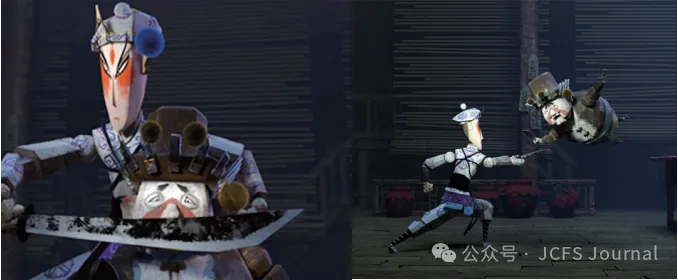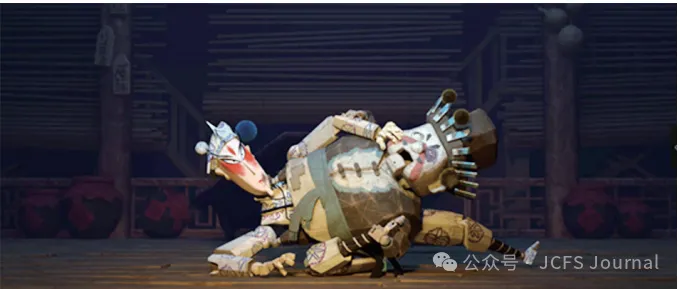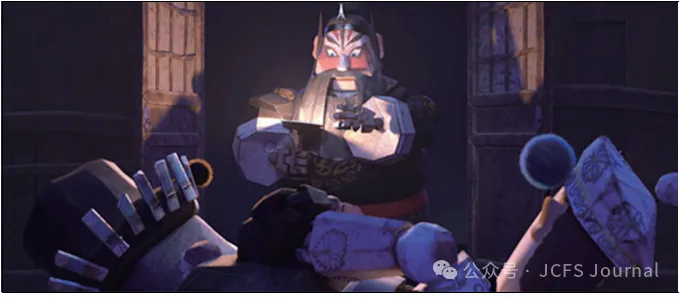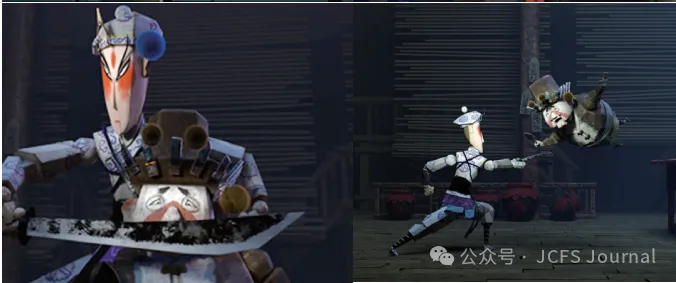
The Application and Innovation of the Stylized Performance of Traditional Chinese Theater in the Animated Film New Sanchakou
Lijun Sun and Siqi Cao
ABOUT THE AUTHOR

Lijun Sun is a vice-president of Beijing Film Academy and a professor from School of Animation at Beijing Film Academy. He also serves as dean of China Animation Academy at Beijing Film Academy. He has directed many animated films, including “Little Soldier,” “Sunny Story,” “Happy Running,” “Bateelaer Saga,” “Legend of a Rabbit,” “Fantastic Adventure,” and others, and his productions won China’s Huabiao Film Awards and Golden Rooster Awards several times.
ABSTRACT AND KEYWORDS
Abstract: In Chinese animated films, the stylized performance of traditional Chinese theater allows for greater expression and creativity, due to 3D digital technology and 8K display technology. This paper takes the animated film New Sanchakou (The Crossroads Inn, 1951), adapted from the traditional Duanda Wusheng (短打武生: martial arts performers equipped with short clothes and short-handle weapons) drama Sanchakou in Peking opera (Jingju) as an example, to explore the application and innovation of stylized performance. In the digital era, Chinese animated films innovate based on past achievements and utilize new technologies to both construct an aesthetic system with Chinese characteristics and to further display the unique charm of traditional Chinese aesthetic thought. By exploring new forms of animation’s performance creation, New Sanchakou meets the new challenge of Chinese animated film nationalization in the new era of China
Keywords: New Sanchakou; animation performance; stylized performance of traditional theater; Chinese school of animation
To cite this article:
Sun, Lijun and Cao, Siqi. “The Application and Innovation of the Stylized Performance of Traditional Chinese Theater in the Animated Film New Sanchakou “ Journal of Chinese Film Studies, vol. 3, no. 3, 2023, pp. 563-576. https://doi.org/10.1515/jcfs-2023-0065

A GLIMPSE OF THE ARTICLE
Since the 1950s, a creative group, mainly composed of animation artists from Shanghai Animation Film Studio, has actively explored the aesthetic system of animation using Chinese national characteristics and gradually formed the style of “the Chinese School of Animation.” Especially in the 1950s and 1960s, Chinese animation artists produced a substantial number of high-quality films, despite material and technological disadvantages. However, when looking back at these classic works, there appears to be a formidable gap between the expression of aesthetics and the use of animation, due to the limitations of technology and other conditions at that time. The New Sanchakou utilizes three-dimensional digital and 8K image display technology to attempt to explore a mode of artistic symbiosis between animation’s ontological features and the stylized performance of traditional Chinese theater.
01 Drawing on the Characteristics of the Stylized Performance of Traditional Theater
New Sanchakou is adapted from the traditional Jingju Duanda Wusheng drama “Sanchakou.” It tells the story of Ren Tanghui, who secretly escorts General Jiao Zan to Sanchakou for sleeping overnight and fights with the inn owner Liu Lihua in the dark by virtue of a misunderstanding. As a one-act martial play, the original production typically portrays characters in the four main roles of “Sheng, Dan, Jing, and Chou (生旦净丑)” through, respectively, only four characters: Ren Tanghui, Liu’s wife, Jiao Zan, and Liu Lihua. In the opening part, Jiao Zan’s appearance and the martial arts scenes of Ren and Liu fully demonstrate the four basic skills of theater performers:”Chang, Nian, Zuo, Da” (唱念做打: Song, Stage speech, Dance acting, Combat).

02 Integrating the Ethnic Features of Stylized Performance into Animation
Unlike the original martial arts performance, the animated performance in New Sanchakou adopts a playful approach to the traditional, stylized martial arts performance program and incorporates elements of actions like acrobatics and ballet. Furthermore, in order to demonstrate the absurd comedic flourish of the actions, the actors perform a kind of “intertwined fight,” creating a brisker pace for the plot to proceed, and integrating stylized performance into the exaggeration and humor of the animated play. To achieve a fierce atmosphere in the fighting scene, the theater also adopts a “Posterize Time” method to present a visual sweep of “flashes of blades” in the wielding of swords. Based on the exaggeration and humor of animated figures, New Sanchakou attempts to enable the performance of traditional art to continue through new technological means.

(2)The Simple and Clumsy Performance of Digital Puppet
The first requirement, in rendering the experience of the stylized performance, is to present the unique charm of animated puppets. The simulated puppets in New Sanchakou are created through digital 3D animation rather than predigital stop-motion techniques. Initially, the audience perceives the puppet-like texture of the animated characters. Despite being three-dimensional and digitally simulated, these puppets possess a “human-like” appearance while also representing nonliving entities.

03 Drawing on the Cultural Heritage of the Stylized Performance
(1)From Proactive Exploration to Technological Innovation
Since the conception of animated film, Chinese animators have continued to explore and construct the animation performance system. The first long Chinese animated film, Princess Iron Fan (Tieshan gongzhu, 1941), borrowed extensive elements within character design and fight scenes from Chinese theater, marking the beginning of the combination of traditional theater and animation. The first Chinese stop-motion puppet animation, The Dream to Be an Emperor (Huangdimeng, 1947), also incorporated stylized performance, using the role of Chou to convey a sense of humor and satire. In the 1950s and 1960s, the “Chinese School of Animation” actively explored the Chinese national characteristics of animating aesthetics. Chinese animators consciously embarked on exploring the application of the stylized performance in constructing animation performance systems.
(2)Building a Nationalized Style in Animation’s Audio-Visual Language
From actions to scene directions and even to the choice of settings, the building of a nationalized audio-visual language of New Sanchakou is characterized by the aesthetic pursuit of illusion of perception (指而识之), appreciation of roundness (以圆为美), and physical and emotional interaction (虚实相生). The film uses cross-cutting audio-visual techniques to depict the scene of “dark night”: the film cuts between shots of the dark clouds outside the inn and the silhouettes of people inside lit by oil lamps, which collectively signifies an aesthetic feature understood as the “illusion of perception.” It’s camera arrangement and action design comply with this aesthetic feature of the stylized performance. With the animation movement of exaggeration and humor, the film not only uses geometric circles as the main image in the portrayal of the two main characters but also as a guide track when they fight each other. Besides, there is no dialogue in the entire film. The main characters’ conflicts are expressed through body movements and sound effects to fulfill the audience’s desire for “storytelling through visuals and hearing,” conveying a visual experience of “spirit in form.” As for sound, in the background is the sound of roaring thunder and pouring rain added to incorporate the used instruments for a more tense atmosphere during the indoor fight scene.

https://www.degruyter.com/journal/key/JCFS/html
 Sora: First Impressions
Sora: First Impressions